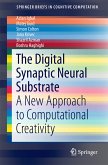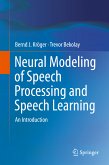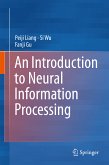The growth in experimental high-throughput neuroscience techniques has allowed the multi-scale acquisition of neural signals, from individual electrode recordings to whole-brain functional magnetic resonance imaging activity, including the ability to manipulate neural signals with optogenetic approaches. This has created a deluge of experimental data, spanning multiple spatial and temporal scales, and posing the enormous challenge of its interpretation in terms of a predictive theory of brain function. In addition, there has been a massive growth in availability of computational power through parallel computing.
The Relevance of the Time Domain to Neural Network Models aims to develop a unified view of how the time domain can be effectively employed in neural network models. The book proposes that conceptual models of neural interaction are required in order to understand the data being collected. Simultaneously, these proposed models can be used to form hypotheses of neural interaction and system behavior that can be neuroscientifically tested. The book concentrates on a crucial aspect of brain modeling: the nature and functional relevance of temporal interactions in neural systems.
This book will appeal to a wide audience consisting of computer scientists and electrical engineers interested in brain-like computational mechanisms, computer architects exploring the development of high-performance computing systems to support these computations, neuroscientists probing the neural code and signaling mechanisms, mathematicians and physicists interested in modeling complex biological phenomena, and graduate students in all these disciplines who are searching for challenging research questions.
Dieser Download kann aus rechtlichen Gründen nur mit Rechnungsadresse in A, B, BG, CY, CZ, D, DK, EW, E, FIN, F, GR, HR, H, IRL, I, LT, L, LR, M, NL, PL, P, R, S, SLO, SK ausgeliefert werden.









